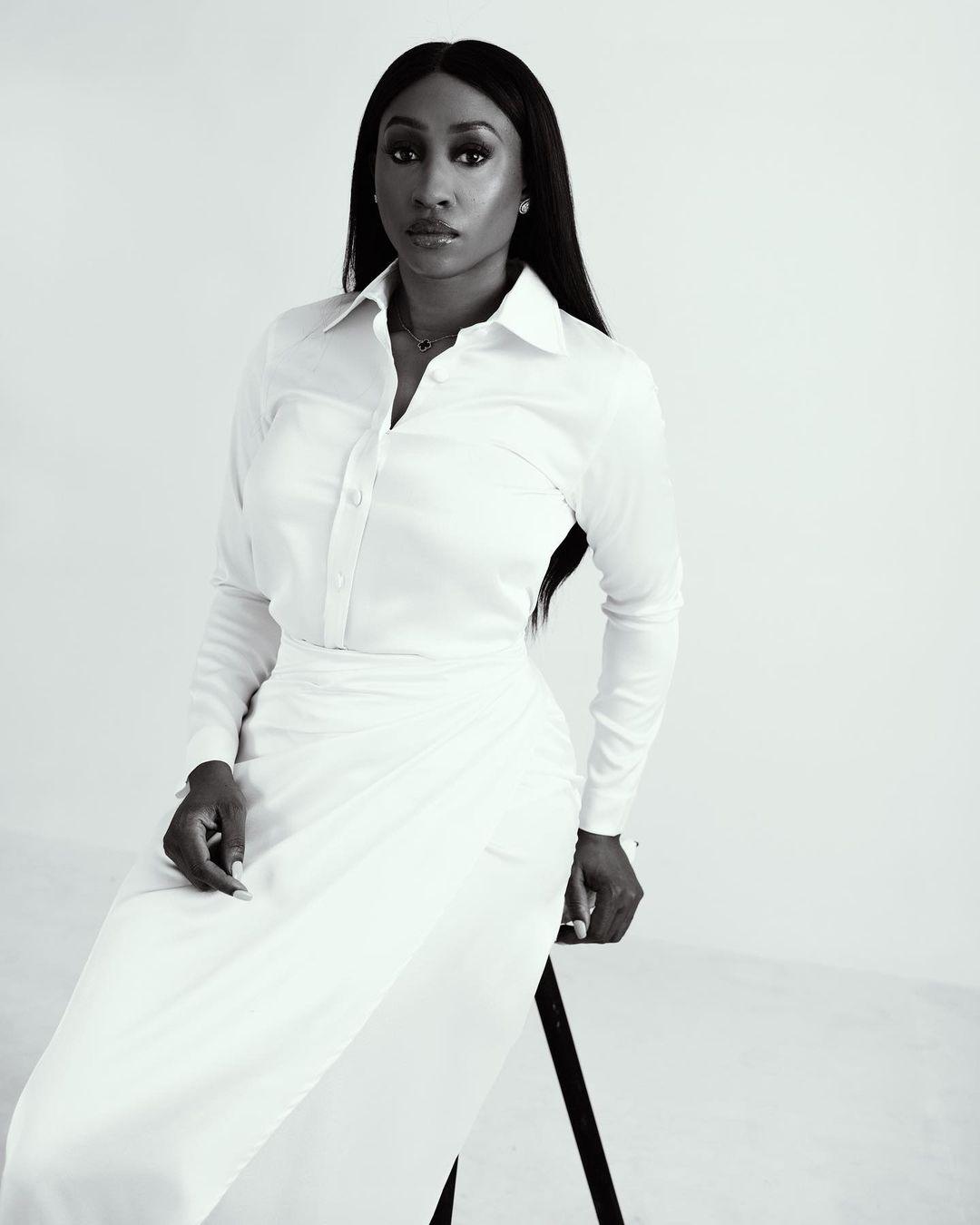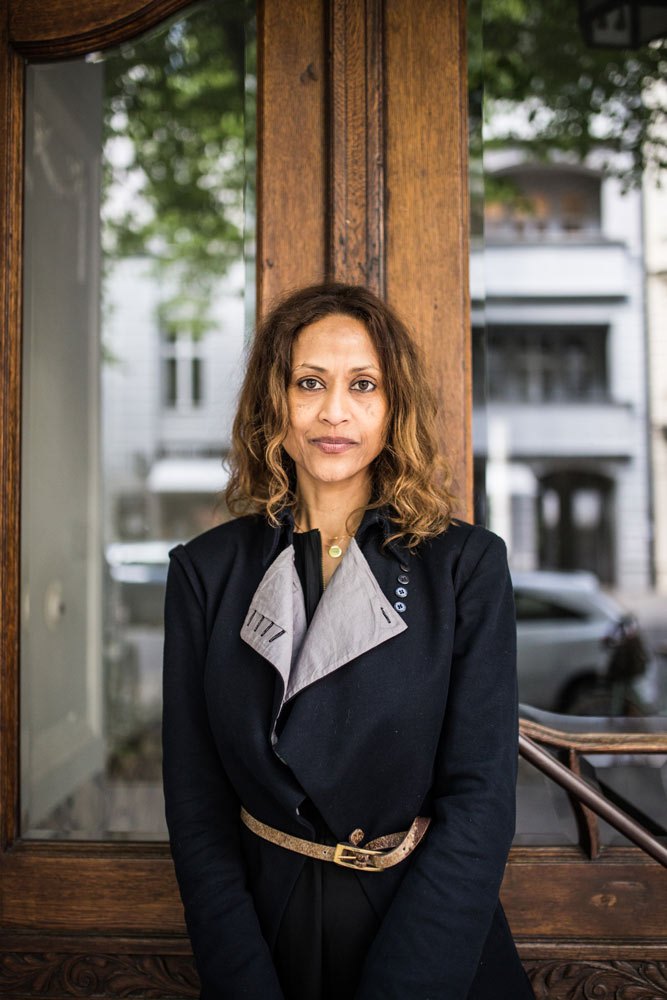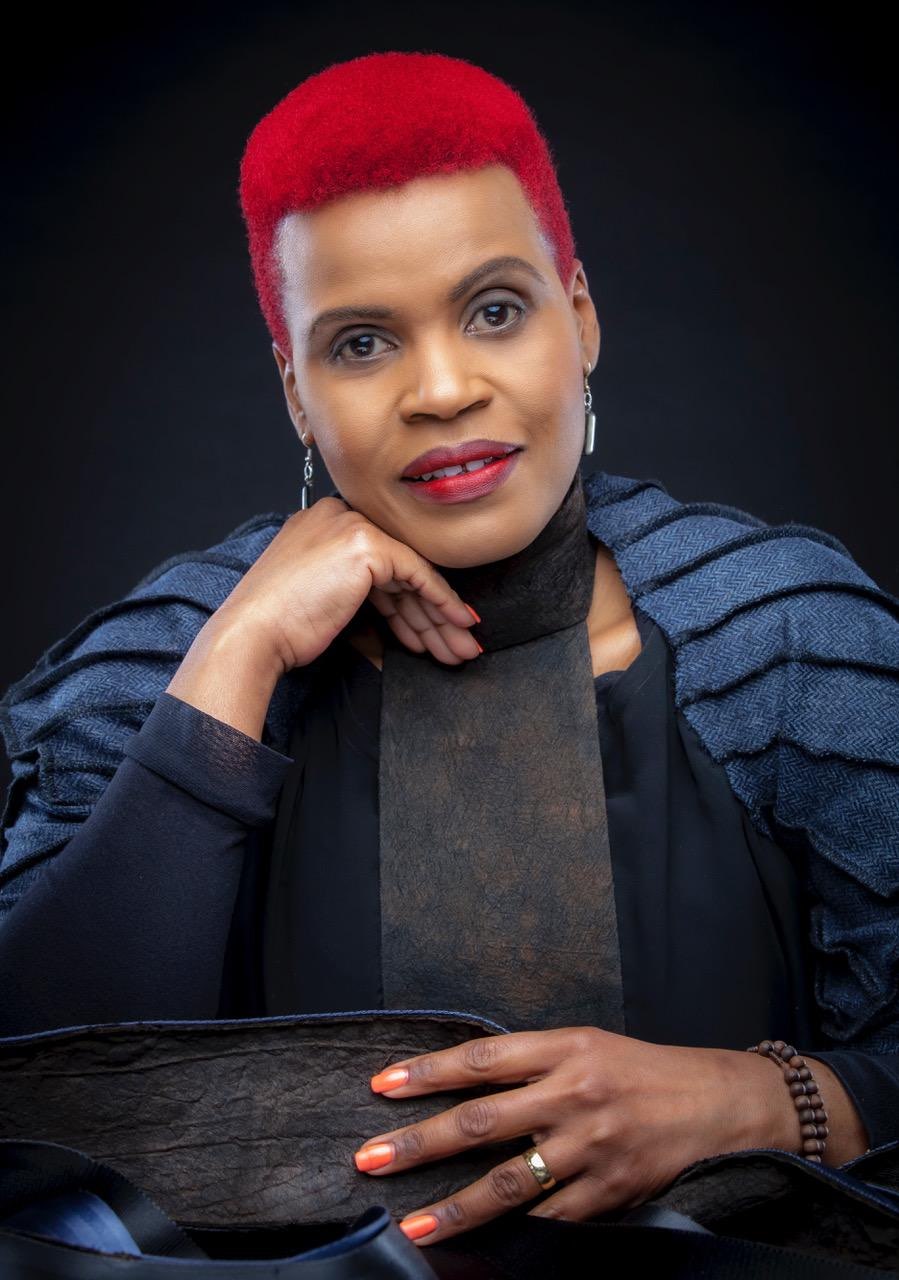As fashion consumers inch towards circular, more ethical, and sustainable fashion, the African fashion industry can set the stage and tone for a new landscape and possibilities. But first, it needs to tap into the diversity of skills required within the sector, and make it economically sustainable.

A Forbes article on how the coronavirus pandemic will change the fashion industry’s landscape identified one of the weaknesses of traditional fashion manufacturing: matching supply and demand. That is, the industry, that largely produces items before there is any demand, ends up overproducing. As the world was forced to slow down because of the COVID-19 pandemic, environmental and human rights issues were at the forefront of our minds and there was growing awareness of the harm that fashion — in particular fast fashion — caused globally.
Garment workers were among those who were hardest hit, with manufacturing happening by and large in Asia. On the African continent, there were reports of 4,000 textile workers being made redundant in Lesotho as demand for clothing goods went down during the pandemic. In Ethiopia, 59 percent of workers saw a fall in their income in March and April of 2020. As 80 percent of garment workers in the world are women, the consequences of redundancies and drop in income are gendered. Furthermore, increased garment sourcing in Africa has resulted in water hoarding by factories, polluting rivers in Tanzania and, again, Lesotho.
These issues, highlighted and exacerbated by COVID-19 point to the need to rethink the industry. Mitigating the costs of the fashion industry on the environment and on labour conditions, aggravated by events like a pandemic, requires the strengthening and restructuring of fashion’s value chain — from idea, to production, to retail.
In Africa, the fashion industry is often spoken about in terms of its potential, but unable in its current state to compete in the global market. As it stands, the industry in sub-Saharan Africa is said to be worth $31 billion compared to the $284 billion in the United States. 90 percent of fashion businesses are small to medium-sized enterprises and they often lack capital, education, and industrialisation.
But the African Growth and Opportunity Act (AGOA), the African Continental Free Trade Area (AfCFTA) and growing demand for the variety in traditional African crafts, fabrics, and dyes, (unique selling points across fashion, music and more) are creating opportunities for the industry to grow. And as consumers become more concerned with the ethics and sustainability of fashion, there is an opportunity for the African fashion industry to lead the way by leaning on traditional materials, production, and aesthetics.
How E-Commerce is Changing the Way Nigerian Women Thrift

How African Fashion Enablers Are Filling Gaps In The Industry
Emanuela Gregorio, economist and coordinator of Fashionomics Africa, an initiative by the African Development Bank Group (AfDB) aimed at fostering the fashion industry in Africa as a lever to create jobs, talks about how there is widespread talent across the continent, but limited business skills. “Some of them [fashion entrepreneurs] lack the education and technical skills needed to run a profitable business.”
Waridi Schrobsdorff and Veronica Ebie, the founders of Fashion Africa 254 (FA254) and Vane Style respectively, agree and through their platforms are helping fashion entrepreneurs cultivate the skills, brands, and markets.
Schrobsdorff was born in Kenya, and has been based in Berlin, Germany since the 90s. She started out as a model with a top agency at the time and through her work travelled across the fashion capitals of the world. She says that entering the modelling world was a risk at the time, but it was “a tool to help me go into my purpose.” This purpose was to help as many people as she could, with the platform she created for herself.
During her time as a model, she was often selected to be an ambassador for charity projects geared towards Africa, “I used those opportunities to join fashion and African stories.” Integrating African stories effectively meant that she had to “go back,” so to speak, to understand the work people were doing in the African fashion industry. When she was invited to host a fashion show organised by the Festival for African Fashion and Arts in 2008, she saw just how talented African designers were. Her desire to shift the attention that Africa received from a context of charity to the creative talent that exists resulted in the social enterprise Fashion Africa 254.
“FA254 is to show that Africa is working. Africa is not a charity,” she says. Aimed at promoting the development of the African fashion industry and opening up the European market (especially German) for emerging African fashion designers, FA254 has organised a series of educational and business initiatives to help fashion entrepreneurs thrive.
One of the problems she attempts to address is strengthening the technical skills of African fashion designers she works with and creating paths to access the necessary material to make different garments. In doing so, Schrobsdorff found that there were structural barriers too. “Many designers do not have pattern making paper and use the same needle for different materials,” she explains. Before the pandemic, she often travelled to countries around East Africa, trying to help designers build relationships with material suppliers. Lack of material results in poor clothes finishing, an issue that has often discouraged buyers from purchasing from African designers. There are hopes that the AfCTFA will help to integrate the supply chain, and drive costs of logistics down across the continent. But even with steady improvements, poor perceptions of quality of African-made garments limit opportunities on the continent.
Through workshops, FA254 focuses on teaching participants technical skills, how to discover their unique selling points, learn sustainability concepts (economics, social and environmental), and social media marketing strategies. Pre-pandemic, FA254 also organised African Designers for Tomorrow (ADfT) competitions since 2013, where new talents are discovered and nurtured. But once these skills are gained, the other issue is meeting demand.
“Ten years ago, they [European buyers] didn’t think Africa was ready and that brands were ready to deliver. They wondered whether African brands could produce the numbers that they were asking for,” Schrobsdorff says. “But this is how Africa has already been doing the work of sustainability in the fashion industry. If you ask for 100 of the same item, you will not get it, but if you ask for 100 items, perhaps with similar designs and with different colours, you might get it.” The 12th United Nations Sustainable Development Goal (SDG) is to ensure sustainable consumption and production patterns, and in Africa, sustainability and circularity is built in. What the continent can contribute by example, is how to slow down production processes and create garments with longevity rather than depending on mass production.
José Hendo’s eponymous brand is “eco-sustainable by design” and uses barkcloth, sustainably made from the bark of the Mutuba tree found in Uganda alongside other organic or upcycled textiles to create timeless and unique one-off pieces. One of the oldest cloths made in the world, its production became endangered after the introduction of cotton in the country. Barkcloth, like other eco-friendly and organic raw materials, are options that consumers have started looking into as they gain environmental consciousness. But sustainability is not only about the material used, it is about the ways and scales at which textiles and garments are produced and the ways that workers across the value chain are treated.
Financial resources and issues like electricity — which, Vane Style’s Ebie says is a big issue for garment production factories in Nigeria — are barriers to upgraded infrastructure for African fashion entrepreneurs. Hence, they are unable to produce in mass and meet international demands, and often are unable to even meet local demand.
But how can slow production methods — handcrafting, made-to-order or limited ready-to-wear pieces — that lend themselves to a more sustainable fashion landscape be scaled to become economically sustainable and even profitable for fashion entrepreneurs? Especially when they are still competing with cheap second-hand clothing and fast fashion? If the African designers’ strength is in their ability to produce many unique pieces, often in a made-to-order format, Ebie says the challenge is that, often, designers have clothing items, but not collections.
Ebie, who has worked in the fashion industry for over a decade, has loved fashion since before she knew she could make a career out of it. Her understanding for how clothing should fit came from her time modelling in Houston, Texas. And when she started working in retail, she also began helping women curate their wardrobes. She would eventually go on to work for Arise Magazine as a style correspondent. “At that time, no one was wearing Nigerian designers. There was Tiffany Amber and Odio Mimonet, and people would wear them, and other luxury designers. But people were not associating with Nigerian fashion at the time,” Ebie says. Eventually she would begin styling for the covers of the magazine and she grew in popularity as a stylist.
Vane Style was registered as a company in 2010, offering styling services at a time when people did not really have personal stylists. This work is how she identified a gap that Schrobsdorff had too: “Designers had a problem because no one was wearing their pieces, and the problem when I styled women is that they didn’t wear Nigerian pieces because they felt the pieces were not made well. The clients’ and designers’ needs were not being met.”
Now, Vane Style offers advisory services to “help designers find their essence,” to consult with brands to strengthen the technical skills of designers, sketch artists, and tailors and help them build an aesthetic, alongside brand management. “It’s not just about being creative; you have to learn the technical skills,” Ebie adds. “In the last 6 years there has been a complete shift.” She says that Nigerians have pushed the importance of “wearing your own” and with growing buying power in the country, most Nigerian women are wearing Nigerian designers.
But emerging designers still find themselves facing the same challenges of making money while satisfying existing customers and finding new ones. According to Ebie, many designers do not give their customers enough options but “when they start developing their collections, their profits grow.” Similarly, Schrobsdorff has been able to open up the European market to designers who have curated and diversified their collections.

Exploring Fashion’s Diverse Entry Points
Ebie and Schrobsdorff found that most people trying to enter the industry were trying to do so as designers. Meanwhile, there are many and diverse entry points into fashion. Jacqueline Shaw, the founder of Africa Fashion Guide, a sourcing and production consultancy and platform that promotes the full supply chain of African fashion and textile, says that a job in the fashion industry creates five more jobs in Kenya. By sourcing barkcloth in Uganda, Hendo is also helping to create sustainable jobs for the community of workers who have kept the manufacture of the cloth alive. Though most artisanal manufacturers are in the informal sector and therefore do not benefit from state protections, empowering them through regular and ethical work is something that emerging African brands can continue to lean into. It also helps to humanise the supply chain and remind us that at every level, people’s lives and livelihoods are involved.
Tobi Olutade, founder of Revival Resurrection, a creative house using fashion and design to enhance socio-environmental change, maintains a close relationship with the workers that help to create her collections. By collecting and upcycling solid waste in Lagos, her brand creates limited editions, and like Hendo’s own practice, seasonless collections that are in part created in youth empowerment factories in Lagos. The factory helps give young Nigerians vocational skills and provides them with a sustainable income.
Both Schrobsdorff and Ebie want young entrepreneurs to know that designing is not the only way to get into the industry, but Schrobsdorff says, “If you tell someone they should be a stylist, they answer, ‘Where will I go?’” Not much prestige or money is tied to other careers in the world of fashion in Africa because of how difficult it is to find clients and make a name for yourself. But part of how Fashionomics and other initiatives are able to unlock the economic potential on the continent, is to provide networking and collaborative opportunities to help usher in the economic possibilities of the industry in Africa. Because “who you know is as important as what you know.”
"Nigerians have pushed the importance of 'wearing your own' "


A Bright Future
“Africa is the future,” Ebie says. The continent’s industry being in its infancy with the lacking infrastructure and challenges in logistics gives it an important advantage: it does not need to undergo extensive remodelling, it has a fresh canvas to build from. Shaw hopes and actively works towards creating a complete supply chain within Africa, so that all the value added could remain and circulate within the region.
Large spaces are being created by fashion enablers to allow Africans to break into the industry and thrive while respecting everyone along the value chain and the environment too. But it will need political will from African states to support the industry to generate jobs and income sustainably and ethically.

